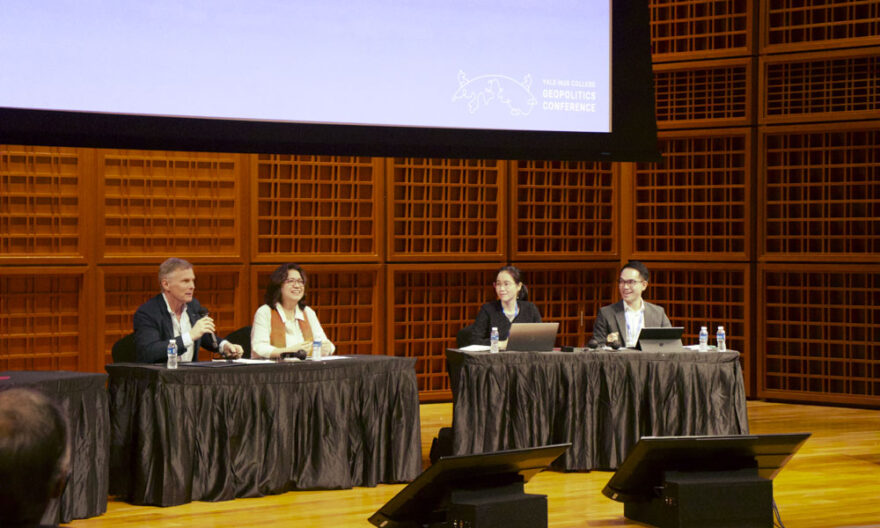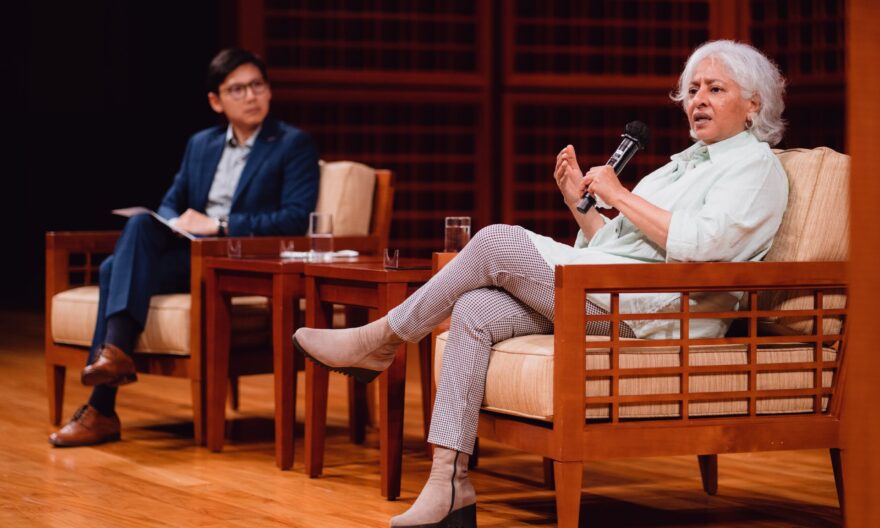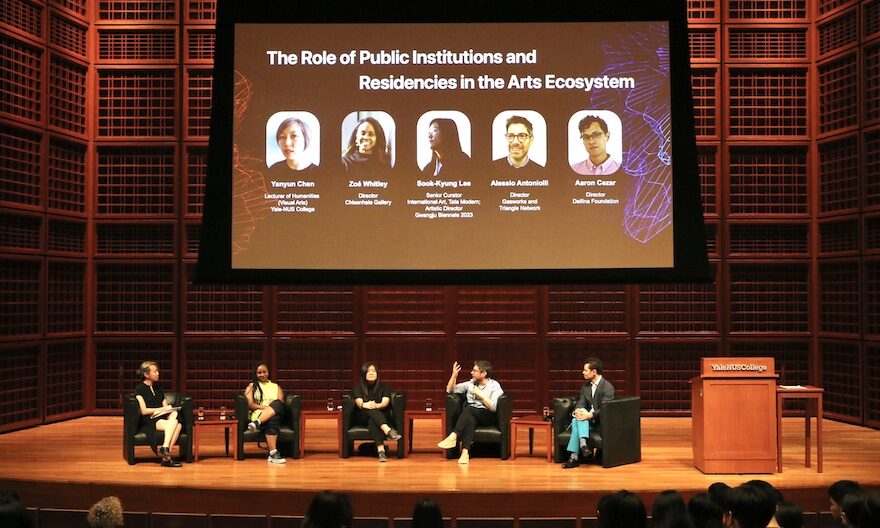Georgette Chen Fellowship supports visual artist James Jack in effecting positive social change
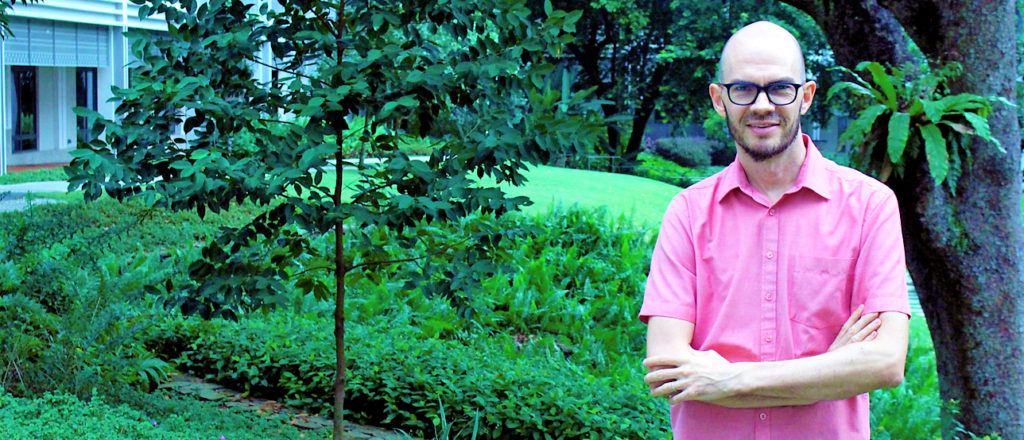 Photo provided by Zhala Sarmast.
Photo provided by Zhala Sarmast.
As a Founding Benefactor of Yale-NUS College, the Georgette Chen Trust – named after the famed Singaporean painter of the 1900s – supports various members of the College community through its philanthropy. At the College, the Trust supports the Georgette Chen Study Award for financially needy students, as well as the Georgette Chen Fellowship, which supports a deserving Yale-NUS faculty member who demonstrates scholarly merit and research promise.
Assistant Professor of Humanities (Visual Arts) James Jack is the College’s third (and current) Georgette Chen Fellow. “Georgette Chen is an incredible artist who affected a lot of people in her lifetime and still does so now, through her work and the legacy of the Georgette Chen Trust. It is an honour to be associated with such a well-known artist here in Singapore, as a gift by one artist to another increases not only their ability to make their work, but the realm of imagination that goes into that work,” Asst Prof Jack said.
Noting that support – such as that from the Georgette Chen Trust – makes larger, fully-realised artworks possible, Asst Prof Jack is inspired to “do what I do even better” and to be even more focused in realising the preliminary ideas from his sketchbooks as larger paintings and installations for exhibitions.
Asst Prof Jack often makes use of natural pigments and materials in his works. While part of this decision is driven by practicality and stems from his early years as an artist fresh out of college working with what was available and accessible to him, another reason is more philosophical – he intends to reconnect to a deeper place “where we come from and go to in the larger picture” through the materials and the content of his artworks.
For example, in one of his most recent installations, Molokai Window (2018, Honolulu Museum of Art), Asst Prof Jack uses dirt pigments to create drawings directly on paper, without the use of brushes or water. The element of storytelling is also central to his works – this same pieces also feature short quotes from community members who shared their insights with him during the artistic process.
“These works start with one community member telling a story, which I record in a very basic manner of touching the earth nearby where they are talking, and through the artworks a window is opened for others to experience their story,” he explained.
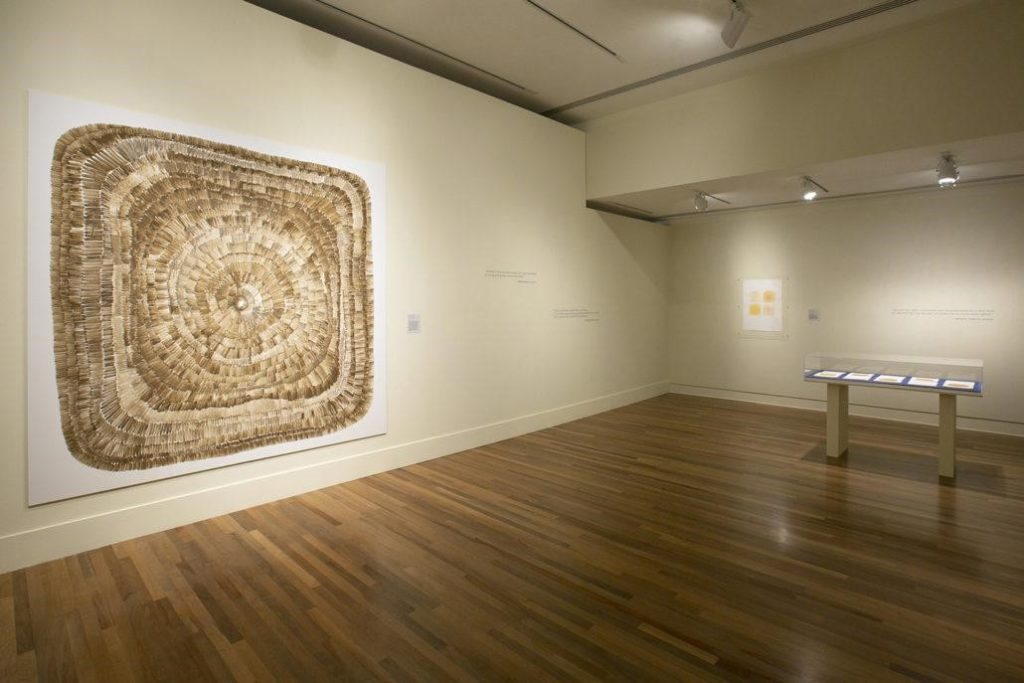 Molokai Window – Natural pigments and gum arabic on wall panel, natural pigments and gum arabic on paper, sketchbooks, quotes from community members; 2018; Honolulu Museum of Art. Photo provided by James Jack studio.
Molokai Window – Natural pigments and gum arabic on wall panel, natural pigments and gum arabic on paper, sketchbooks, quotes from community members; 2018; Honolulu Museum of Art. Photo provided by James Jack studio.
Asst Prof Jack sees that his role as an artist is to be a vessel for sharing stories that connect communities to the earth that sustains them. The sharing of stories about the importance of the land play an important role in shaping narratives about the places we live in as places of abundance. His site-specific approach gives birth to artworks that are meaningful to the local communities and others who are connected to those places. This process opens diverse audiences to the idea that from the smallest granule of dirt springs forth the largest worlds of abundance.
“I think the role of an artist in the 21st century is that of a catalyst, a stimulator, or someone who can contribute to positive social change,” he shared. “Artists can change the world through alternative means, such as imagination, social relationships, visual consciousness and other alternative approaches to comprehending how the world exists.”
Coming from a liberal arts and sciences background himself as an undergraduate, Asst Prof Jack was drawn to Yale-NUS’ unique philosophy. After participating in an exhibit at the Institute of Contemporary Arts in Singapore in 2013, he found that Singapore has progressed beyond merely a marketplace towards a place for many types of creative production. Nowadays, with more local artists returning to Singapore and international artists working here, there are opportunities to collaborate and share with one another.
Yale-NUS, too, offers great opportunities for collaborative learning. For example, this summer, Asst Prof Jack will be leading a group of students on a Learning Across Boundaries (LAB) programme to Okinawa, Japan titled ‘Our See of Islands: Creative Arts and Social Engagement in Okinawa’. LABs are experiential learning programmes developed by the Yale-NUS Centre for International & Professional Experience (CIPE) in collaboration with Yale-NUS faculty, which enable students to apply what they have learnt in the classroom to real-world situations.
While Asst Prof Jack’s LAB is centred on the creative arts, students will also explore related issues from various other disciplines, including the role of maritime currents in shaping island ecosystems, the role of islands in travel routes and narratives, and the socio-historical context of Okinawan culture and history today.
Thanks to Yale-NUS’ distinctive curriculum, in which students go through two years of shared courses in the Common Curriculum before choosing their majors in their third and fourth years, students share a common philosophical and literary understanding building upon their diverse interests and backgrounds.
“Engaging with a broad intellectual exposure to world traditions (such as in the Common Curriculum) then choosing one’s own pathway, teaches one to be able to discuss anything with genuine intrigue and curiosity – I think this is one of the most important aspects of any form of education existing in the world,” Asst Prof Jack remarked. “I love working with other artists, students and colleagues while contributing to the future creative community in Singapore and beyond.”

